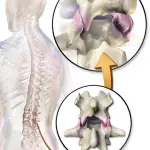Whenever you talk about the potential of using an inversion table, the first thing that you need to keep in mind is that this machine has been designed to provide a whole host of potential health benefits to its user. Using the inversion table is not something that should be undertaken without having spent some time researching into the subject available online. In this article, we will discuss reasons why do inversion tables cause brain aneurysm.
Lack of oxygen
Inversion tables are supposed to improve blood flow by increasing the amount of blood that flows back to the heart when you hang upside down. But if you’re not in good health, or if you have high blood pressure or a heart condition, inversion can do more harm than good. It can cause a condition called cerebral hypoxia, which is when the brain doesn’t get enough oxygen.
Stroke
Another problem with inversion tables is that they can lead to strokes and other problems with your arteries. When you hang upside down, there’s an increased risk that blood will pool in your head and cause a stroke or brain hemorrhage (bleeding). This happens because gravity causes blood to rush away from your head and toward your feet when you’re inverted — this means there’s less blood flowing through your brain and therefore less oxygen getting there as well. In addition, hanging upside down puts pressure on the carotid artery.
Heart Attack
Inversion therapy can be dangerous for people who have heart problems or a history of heart disease. The pressure on your body can cause a heart attack because it increases blood flow through the lungs and lowers blood pressure. This can lead to increased strain on your heart muscle and cause damage or rupture of the blood vessels supplying blood to your brain. It’s recommended that you consult your doctor before using this device if you have any kind of heart condition or history of stroke or heart attack because it could worsen your condition and result in death.
Tumor
The inverted position puts pressure on certain organs like the liver, spleen and kidneys which may cause them to rupture or develop tumors over time due to their inability to function properly when under pressure. This could lead to severe bleeding which would require immediate medical attention if left untreated.

Epilepsy
If you have epilepsy or a family history of epilepsy, talk to your doctor before trying inversion therapy.
Epilepsy is a brain disorder that causes seizures, which are episodes of uncontrolled electrical activity in the brain. The most common type of seizure is called a tonic-clonic seizure (also known as grand mal). During this type of seizure, your body stiffens and jerks uncontrollably while you lose consciousness.
Inversion tables may cause seizures during or after use if you’re prone to them. The risk may increase if you’re taking drugs that lower blood pressure like beta blockers or calcium channel blockers for high blood pressure or heart disease.
Head Injury
People who have a head injury should also avoid using an inversion table. The sudden change in pressure on the brain may cause more damage to already injured areas of the brain, which could lead to death or permanent disability.
High Blood Pressure
High blood pressure is another reason why do inversion tables cause brain aneurysm because it puts a strain on your heart and lungs which can lead to life-threatening complications like stroke or heart attack if left untreated. The high blood pressure caused by using an inversion table can also place additional stress on your carotid arteries, which are located at the side of your neck where they supply blood to your brain and neck muscles. This can cause them to rupture, leading to a stroke or even death if not treated immediately with surgery or medication (like aspirin).
Intracranial Hemorrhage
Intracranial hemorrhage is a type of brain hemorrhage that occurs within the skull. It is a medical emergency due to the risk of permanent brain damage or death. Intracranial hemorrhages are also called cerebral hemorrhages or intracerebral hemorrhages.
The most common types of intracranial hemorrhage are subarachnoid hemorrhage and intracerebral hematoma. Subarachnoid hemorrhage occurs when blood leaks into the space between the brain and the arachnoid membrane (a protective tissue surrounding the brain). Intracerebral hematoma occurs when a ruptured vessel within the brain leaks blood into surrounding tissue, forming a clot (hematoma).
The most common causes of intracranial hemorrhage include:
- Traumatic brain injury (TBI) from an accident or fall
- Bleeding disorder such as hemophilia or blood thinning medication
- Sinus infection or nasal trauma
Respiratory Failure
Inversion tables are not recommended for people with high blood pressure or heart disease. They can also cause problems in people with other conditions such as diabetes, cancer, or lung disease. If you have any of these conditions, talk to your doctor before using an inversion table.
The main problem with inversion tables is that they can cause spinal cord damage when not used properly. This damage can cause respiratory failure and paralysis, which can be fatal if not treated in time.
Depression
Depression is a mental illness that causes feelings of despair and feelings of sadness. It can be caused by many factors such as genetics, environment, or chemical imbalances in the brain. People who are depressed may feel like they want to die or they lose interest in activities they once enjoyed. They may have trouble sleeping at night, eat more or less than usual, or have other physical symptoms of depression such as headaches and stomach aches.
Depression affects about one in 10 people during their lifetime. It is the leading cause of disability worldwide for people aged 15-44 years old. If you have been feeling depressed for a long time and need help, contact your doctor.
Wrapping Up
If the inversion table is used properly, it helps the spinal cord in regaining its normal alignment. Whether we have used it on purpose or not, we are still vulnerable and prone to injuries. Although many people would recommend that one take a day off from their exercise routine and give their body some rest after an injury, this might not always be possible with our daily busy schedule. Our health is our wealth so we should try to maintain this by using the inversion table and having an active lifestyle.





